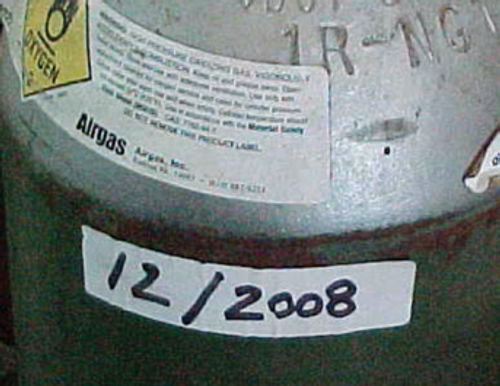Keeping Track of High-Pressure Bottles
IF YOU DO any welding with a MIG welder or cut or weld with an oxyacetylene torch, you must be aware of your date stampings on your high-pressure bottles and know how to read them.
Photo #1 shows the date stampings on an oxygen bottle. (Argon/CO2 would be read in the same manner.)
If the most recent date has the plus sign (+) after it, you can add five years to the date, and that is when it will need to be retested/recertified.
If the date is followed by a plus sign and a star, or just a star, then you would add 10 years to that date before it will need to be retested.
So, the bottle you see here in Photo 1 was good through December 2008. (Editor’s note: John sent us these photos prior to that date, so be assured that he’s not been working with expired bottles.)
If you are welding & cutting all the time, keeping track of the expiration dates likely will not be an issue for you. If, however, you can go months without using the equipment, it’s a good idea to do what I did in Photo #2 and use a large mailing label and a Sharpie and make the date jump out at you!

Costs vary with locations, of course, but with Airgas of Florida, a refill of the oxygen bottle costs $20. If you pass the date stamp, the cost is $36 to test and fill. I was told these markings are a standard throughout the industry, but speak with your local welding shop to make sure, it will only take a moment.
John Armstrong
Inverness, Florida
Along with supplying us with tips such as this one, John, a retired auto tech, also is a regular contributor of how-to articles. His latest, on confirming valve timing, is on page 20.
















